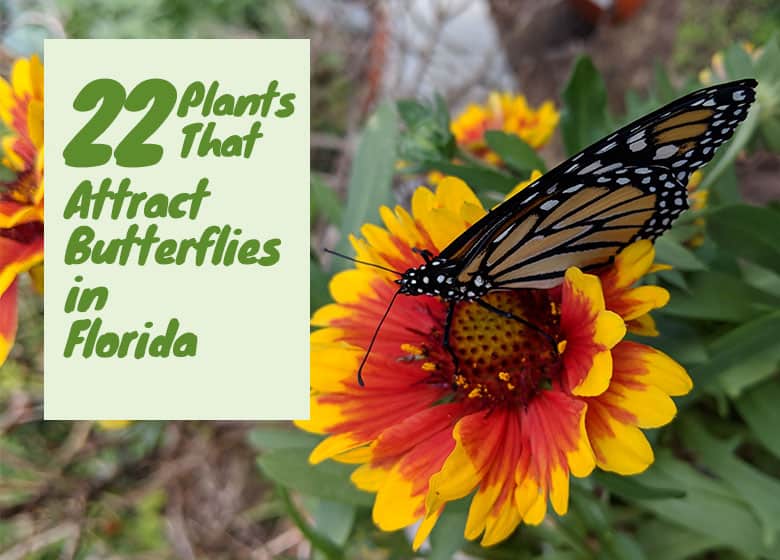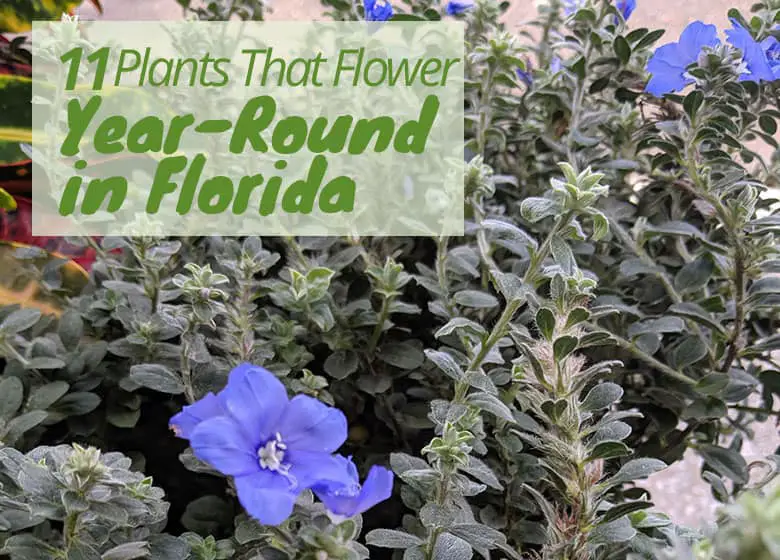
There are serval flowers that bloom year-round in Florida. Nothing adds a cheery and colorful appeal to gardens like flowers and Florida gardeners have a wealth of choices in year-round flowering plants that thrive statewide. Selections in flower colors and shapes, as well as the plant’s growth habit, are just as varied and there’s something to suit everyone’s fancy and desires.
Some popular plants that bloom all year in Florida are Blanket Flower, Lantana, Mexican Heather, Hibiscus, and Ixora to name a few. Pick the right plant for the right spot. Ideal conditions, as well as pruning, watering, and fertilizing will lead to more flowers all year long.
Whether you want a year-round bloomer that’s a Florida native, drought- and salt-tolerant, attracts beneficial pollinators, grows well in containers or adds a pop of color to hardscapes, shade or sunny gardens, you won’t be at loss in choices. No matter the season, flowers that bloom all year brighten even the dullest landscape areas.
Read on because we cover some popular plants that bloom year-round in Florida, as well as details on their use and keeping them thriving and colorful additions for years to come.
Plants that grow well in Florida and Bloom Year-Round
Regardless of where you reside within the state, it’s possible to enjoy a colorful Florida landscape no matter the season by utilizing flowering plants that burst into bloom all year long. Gardens graced with year-round colorful blossoms can add some brightness to even the dark, cold days of winter.
Wherever you want a blast of color all year, there’s a flowering plant that will meet the area’s requirements. Below are some Florida-friendly perennial flowering plants that bloom year-round, and are guaranteed to liven up any garden area with their colorful flowers.
Lantana
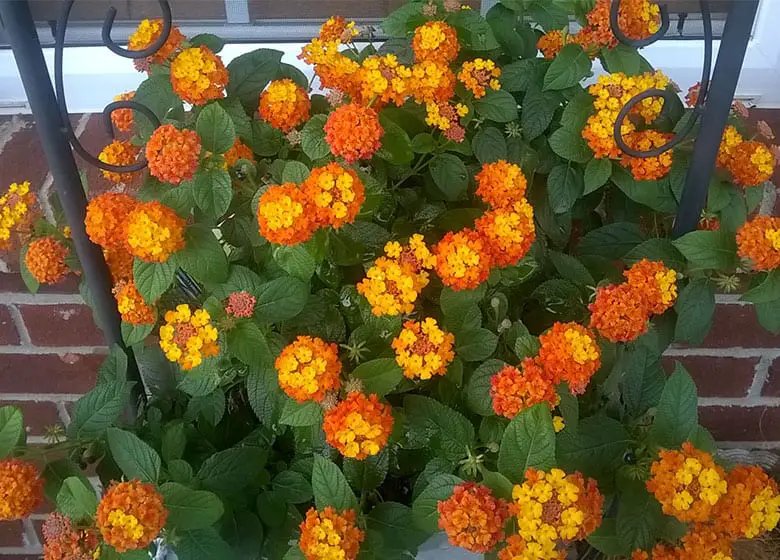
For a low-maintenance, easy to grow, year-round bloomer that is both salt-, heat- and drought-tolerant, you cannot go wrong growing lantana.
These perennial plants produce clusters of small flowers that are multi-colored, pink, cream, yellow, lavender and red.
Lantana has toothed green foliage that is velvety and the shrub variety grows several feet tall and wide. There is a smaller trailing type perfect for hanging baskets.
Plants attract butterflies and work well used in containers, hanging baskets, borders, filler plants or mixed gardens. Grow in well-drained soil in full sun.
Blanket Flower
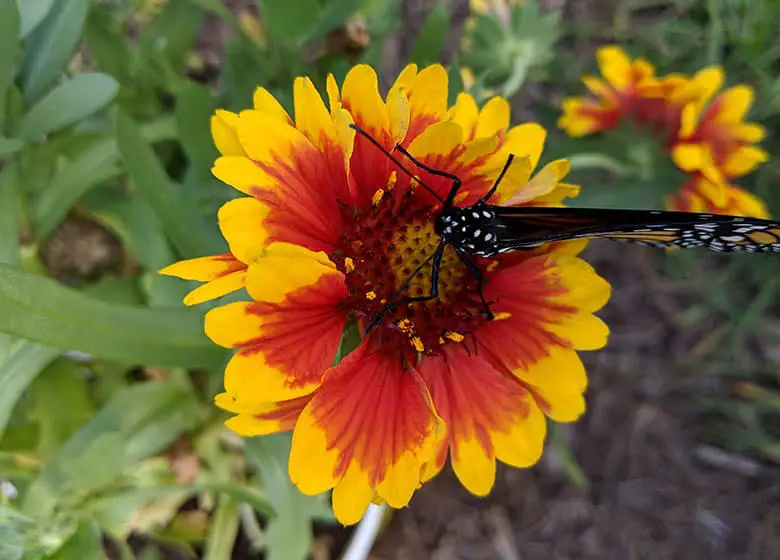
Blanket flower guarantees a blast of brilliant eye-catching color whether used in containers or the garden.
This salt- and heat-tolerant short-lived perennial fills with 2- to 3-inch daisy-like and frilly petals with large centers in hues of orange, red, yellow, copper scarlet and rose-purple.
Mounds grow over a foot tall and wide, making the plant a good border, filler or ground cover plant. The flowers attract butterflies and spent seeds readily send up volunteers.
Native blanket flower is a welcome addition to wildflower, native, seaside and pollinator gardens. Grow in a sunny location in soil that drains well.
Mexican Heather
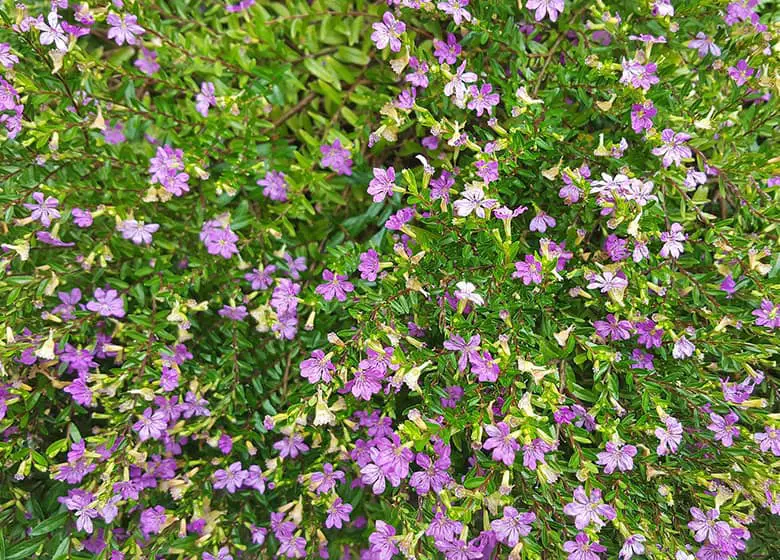
Mexican heather offers a year-round non-stop show of tiny purple, white or red blooms against lacy dark green foliage.
This evergreen perennial forms into dense and compact flowering shrubs averaging around 12 inches tall, making it a great choice for borders or lining walkways. It also performs well in containers and attracts butterflies. For the best performance, grow this hardy bloomer in full sun to partial shade and in rich, well-drained soil.
Hibiscus
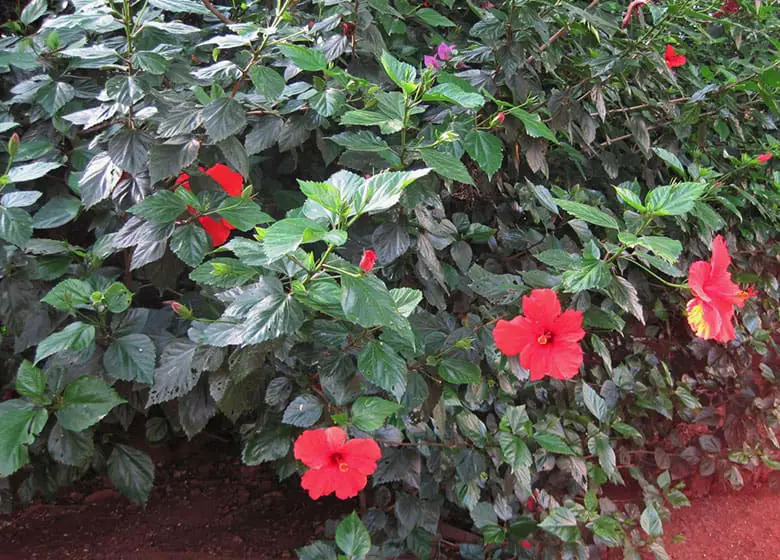
Nothing highlights Florida’s tropical paradise quite like the large stunning flowers of tropical hibiscus plants that bloom all year. The extremely showy flared and bell-shaped blooms come in double, single, scalloped or smooth forms and colors are just as varied.
Whether you desire red, orange, yellow, purple, pink, white or multi-colored blooms, tropical hibiscus has you covered. Hibiscus is an evergreen perennial with shiny large green foliage.
Typically grown as a shrub, with some types growing 15 feet tall, hibiscus also can be trimmed into tree form. It grows best in fertile, well-drained soil located in full to partial sun. Hibiscus makes a striking specimen and works well as a hedge, privacy screen, in mixed gardens or used in containers.
Plumbago
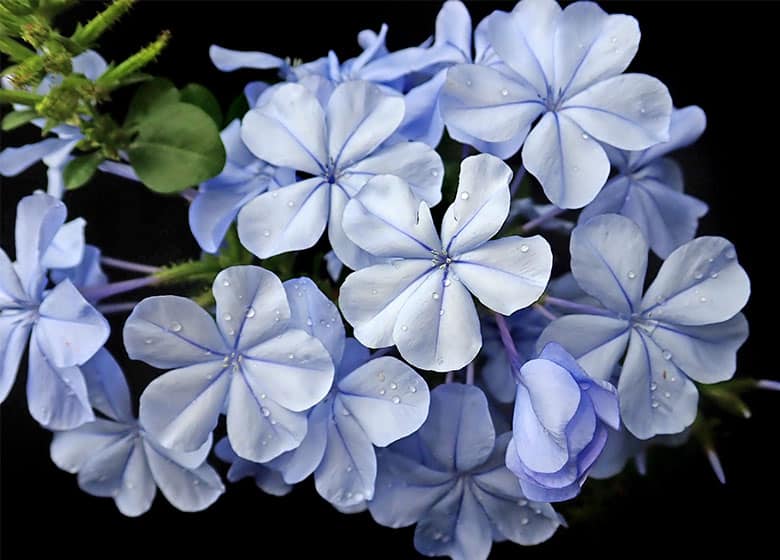
If you’re looking to add a blast of year-round blue to the garden, then look no further than plumbago. This hardy evergreen shrub’s graceful arching branches covered in small, yellowish-green leaves fill with 6-inch clusters of sky blue phlox-like flowers.
Additionally, there are cultivars producing white and dark cobalt blue blooms. Plants form rounded mounds 3 to 10 feet tall and wide, making them suitable used in borders or as formal or informal hedges.
Plumbago is a colorful addition to mixed beds, used as a filler, foundation planting, and borders or in containers with the bloom-filled branches spilling over the side. Grow in well-drained acidic soils located in full sun, for the best bloom production.
Ixora
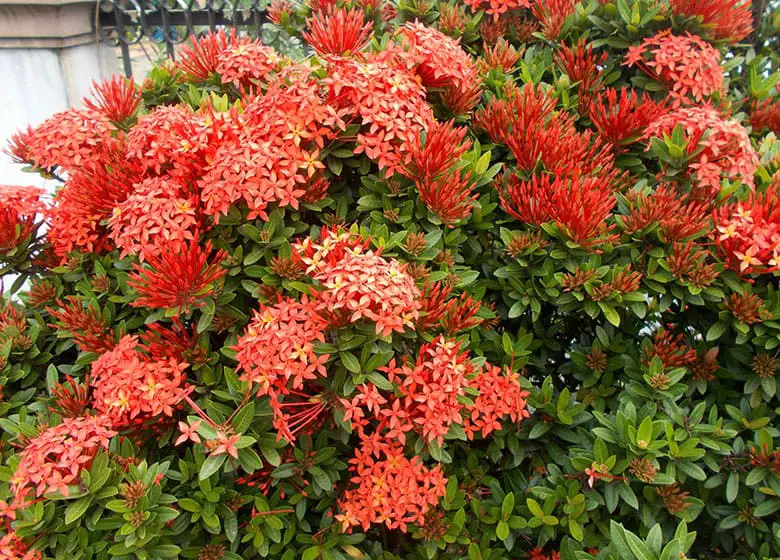
Ixora, commonly called jungle flame, produces 2- to 5-inch rounded flower clusters filled with red, yellow or pink tubular blooms, depending on the cultivar and blooms year-round.
The flowers are quite showy against the dense evergreen green foliage and attract butterflies.
Averaging 4 to 6 feet tall, Ixora makes a colorful statement in the landscaped used as a hedge, screen, lining a border or walkway, foundation plant, used in mass or mixed beds.
Those living in northern portions of Florida receiving freezes can grow this heat-lover in containers and protect in winter. Grow in rich acidic soil kept moist through regular watering and in a location receiving sun in the morning and partial shade during the afternoon.
Gerbera
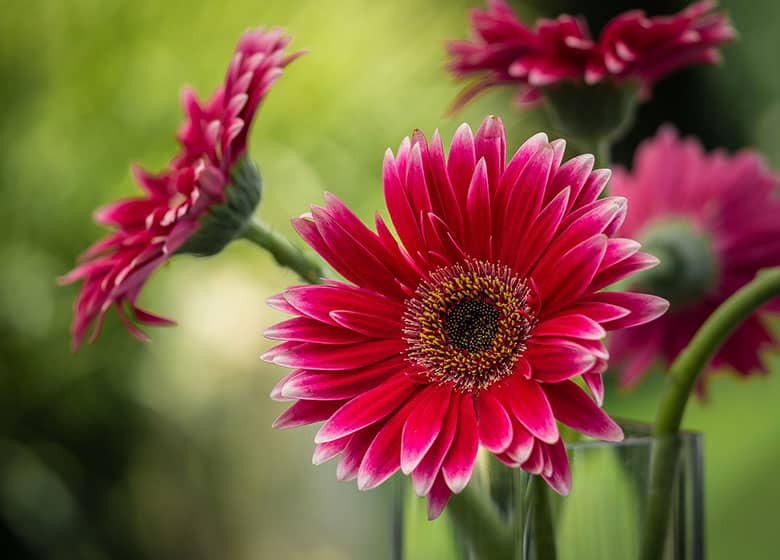
This plant has flowers the bloom year-round in Florida, we are lucky enough to grow this plant as a perennial. Most of the country can only grow Gerbera daisies as annuals, Florida gardeners are lucky enough to grow these showstoppers as year-round blooming perennials.
A relative to sunflowers, Gerbera daisies produce large 3- to 4-inch robustly colored flowers in hues of red, pink, white, purple, yellow and orange.
The blooms are long-lasting and make suitable long-lived cut flowers. The fuzzy 12-inch long leaves form into 12-inch clumps, making them colorful additions to borders, mixed beds, walkways or containers.
Grow in rich, well-drained soil watered regularly and in a partially sunny or sunny location that receives some shade in the afternoon.
Firespike
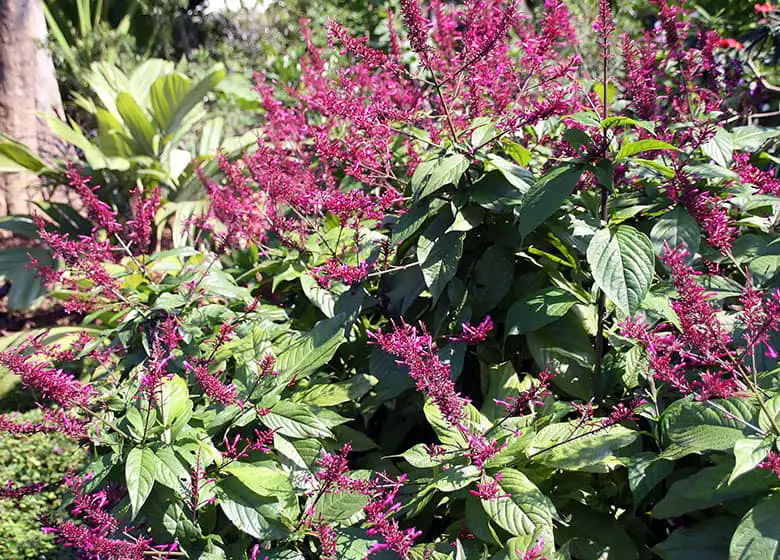
For a showy, year-round blooming evergreen shrub that’s an essential addition for butterfly and hummingbird gardens, you cannot go wrong with firespike.
It makes a picturesque display with its 6-foot tall stiff and upright branches covered in large shiny green leaves with foot-long panicles on top filled with brilliantly red tubular flowers.
In areas of the state experiencing freezes, firespike dies to the ground only to resprout in spring. It works well as an informal hedge or screen. It grows in a variety of well-drained soils located in full sun to partial shade and is relatively drought- and salt-tolerant once established.
Blue Daze
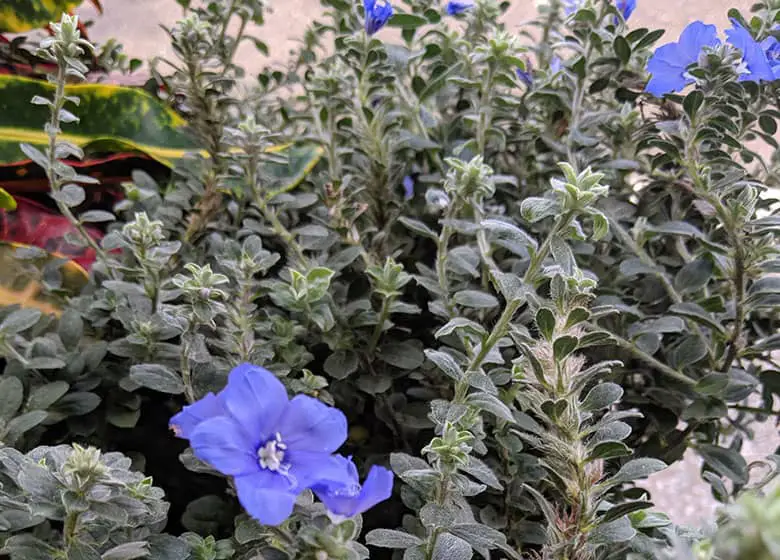
Whether used in containers or grown in the landscape, blue dazes abundance of cheery blue flowers add year-round color and appeal wherever grown.
This low-growing evergreen perennial is a true heat-lover and the blooms won’t skip a beat in Florida’s intense summers.
However, it hates cold weather so those in northern Florida should treat as an annual or grow in containers for winter protection.
This profuse bloomer produces 1-inch funnel-shaped blue flowers highlighted by 1-inch fuzzy green egg-shaped leaves.
Mounds grow 2 to 3 feet tall and wide, making it useful as a ground cover or border plant. Plants prefer well-drained soils situated in full sun to partial shade. Blue daze is relatively drought-tolerance once established.
Penta
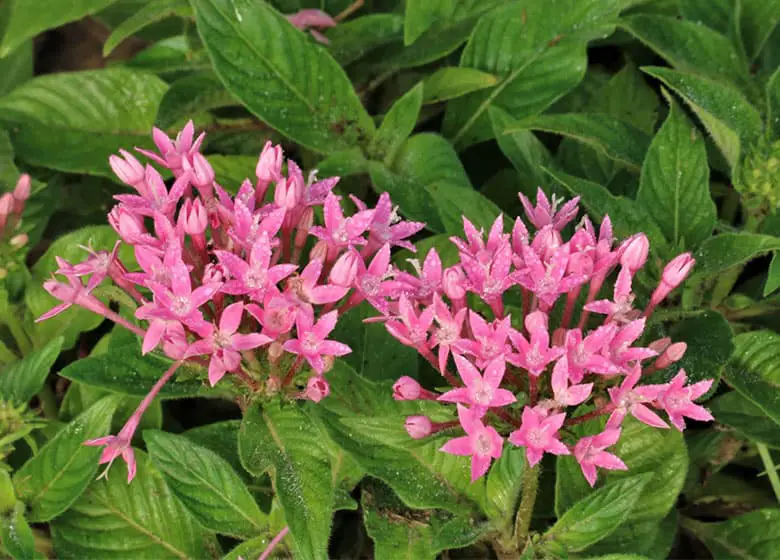
Commonly called starflower because of the profuse clusters of star-shaped flowers. Penta is a must-have in butterfly or hummingbird gardens.
Dark green lance-shaped and slightly fuzzy foliage highlight the attractive flower clusters in colors of red, pinks, purple, white and two-toned.
Warm temperatures promote an abundance of blooms. This evergreen perennial grows 3 feet to 1 foot tall, depending on the variety, making it useful in mixed gardens, borders, planted in mass or used in containers.
Penta prefers a well-drained fertile soil with regular water applications and in a sunny to shadier location, with sun promoting the most blooms.
Vinca
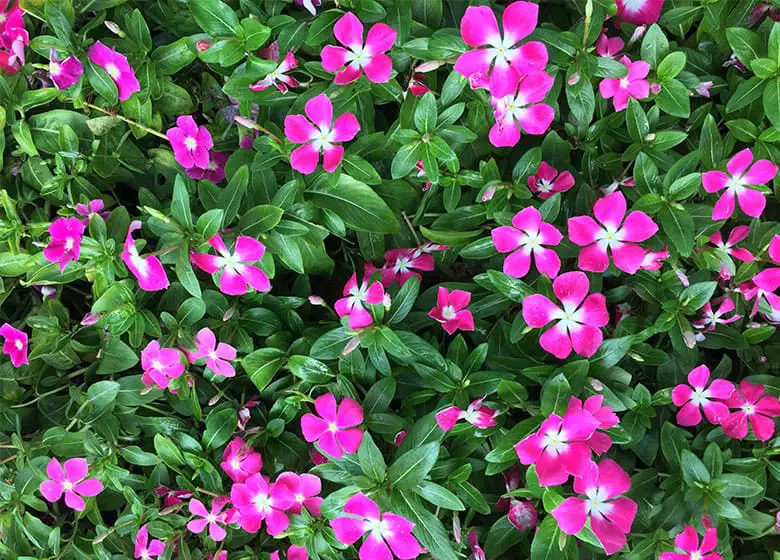
Also called common periwinkle, Vincas’ vine-like stems covered in 2-inch evergreen green leaves, fill with funnel-shaped blue-violet flowers, making it an attractive ground cover.
However, there are cultivars producing white, burgundy and double white blooms, as well as a variegated type producing yellow and green leaves.
Vinca forms into large sprawling plants, making it perfect used under trees or covering a bank or large area. It grows in sun or shade, but warmer areas of the state should grow it in a shadier location.
Sun produces the most blooms, but central and southern portions of Florida are too hot and Vinca requires shade. It tolerates a wide range of soils, with moist soils producing the fastest growth.
How Do I Get More Flowers On My Plants?
It’s great to have a few flowers that bloom year-round in Florida, but you want to get maximum flowers possible right?
More flowers equate to more color, so if you’re wondering how to get more flowers on your plants there are some basic things you can do to promote more blooms.
These simple tips pertain to most flowering plants.
The first and most important step is making sure the flowering plant is growing in preferred conditions. This is where familiarizing yourself with the particular plant pays off. For the best flowering, make sure the plant is growing in preferred light and soil conditions and is receiving the desired amount of water.
Be sure to fertilize with something that has a decent amount of phosphorous. Phosphorous gives the plant power to promote flower growth. A fertilizier that is focused on nitrogen will promote the plants green leafy growth instead. A good fertilizer for Flower growth is something like this Dr Earth 3-9-4 Fertilizer.
Additionally:
Deadhead spent flowers, unless the flowers are self-cleaning.
Prune leggy plants. More branches mean more flower buds.
Fertilize plants as required.
Planting your flowering plants in preferred conditions and giving them proper care goes a long way in promoting more blooms.
Common Flower Arrangements to Plant in Containers
Whether you just don’t have large garden space for more plants or you’d just like to liven up a porch or entranceway with colorful container plants, many flowering plants make attractive and eye-catching combinations planted together.
Of course, you want to make sure you plant combinations having the same requirements in soil, light, and water. This assures a healthy and thriving container garden.
Some plants that make appealing container gardens and grow well together include:
- Penta used as the center specimen with blue daze planted on the outside to sprawl over the side.
- Ixora used as the center specimen with lower-growing blue daze or blanket flower planted around the outside.
- Larger container with firespike in the center and blanket flower or blue daze planted on the outside.
- Taller Penta variety planted in the center of a hanging basket, with Vinca used around outer edges to hang over the side.
- Hibiscus, pruned into a small tree, used in a larger container with Gerbera daisies planted around its base.
Whether you live in an apartment or have an endless area to add flowering plants, Florida gardeners can pump up the color of their outdoor areas with a multitude of hardy plants. Regardless of your design style or desired color scheme, there’s a flowering plant that will make the area an eye-catching and colorful delight.
You Will Probably Also Like
